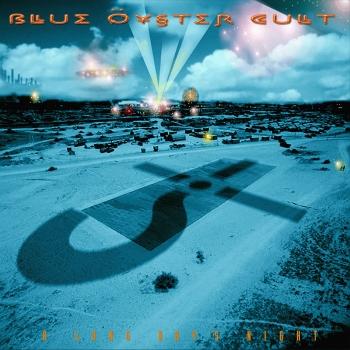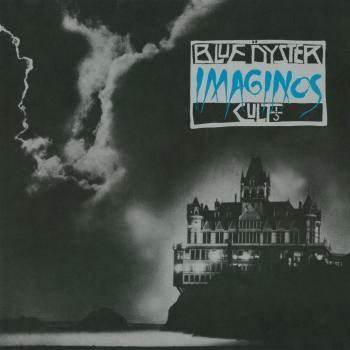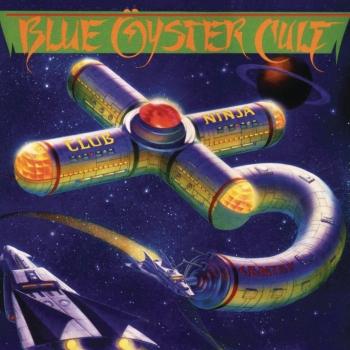
Spectres (Remaster) Blue Oyster Cult
Album Info
Album Veröffentlichung:
1977
HRA-Veröffentlichung:
13.07.2016
Label: Sony / Columbia / Legacy
Genre: Rock
Subgenre: Hard Rock
Interpret: Blue Oyster Cult
Komponist: D. Roeser, B. AbbottR. BINDER, A. Lanier, A. Bouchard, S. Pearlman, H. Wheels, Eric Bloom, Ian Hunter
Das Album enthält Albumcover
Entschuldigen Sie bitte!
Sehr geehrter HIGHRESAUDIO Besucher,
leider kann das Album zurzeit aufgrund von Länder- und Lizenzbeschränkungen nicht gekauft werden oder uns liegt der offizielle Veröffentlichungstermin für Ihr Land noch nicht vor. Wir aktualisieren unsere Veröffentlichungstermine ein- bis zweimal die Woche. Bitte schauen Sie ab und zu mal wieder rein.
Wir empfehlen Ihnen das Album auf Ihre Merkliste zu setzen.
Wir bedanken uns für Ihr Verständnis und Ihre Geduld.
Ihr, HIGHRESAUDIO
- 1 Godzilla 03:41
- 2 Golden Age of Leather 05:53
- 3 Death Valley Nights 04:09
- 4 Searchin' for Celine 03:37
- 5 Fireworks 03:12
- 6 R. U. Ready 2 Rock 03:45
- 7 Celestial the Queen 03:26
- 8 Goin' Through the Motions 03:12
- 9 I Love the Night 04:25
- 10 Nosferatu 05:23
Info zu Spectres (Remaster)
Released during the year that punk broke, Blue Oyster Cult's sixth album was the important follow-up to the hugely successful „Agents of Fortune“. „Spectres“ found the group continuing to craft material that mated a trademark guitar-driven sound with intelligent lyrics. Although many short-sighted critics labeled the band heavy metal, this Long Island quintet was far more creative than this classification would suggest.
The important follow-up to "Agents of Fortune" was an overall darker album. It opened with one of their most beloved concert favourites in form of "Godzilla". But the album had far more to offer than just that classic. "The Golden Age of Leather" has a very interesting structure, starting with something that sounds like a shanty and then going into a riff-based heavy rocker before becoming gradually more melodic. And if there had been any justice in the world, then "Celestial the Queen" and "Goin' Through the Motions" would have been two of the biggest hit songs of 1977. "I Love the Night" was probably their most straightforward ballad since "Then Came the Last Days of May". The overlooked "Fireworks" has one of the strongest melodies on the album, while "Death Valley Night" and "Searcin' for Celine" are both melodic and catchy rockers. "R.U. Ready 2 Rock" is an attempt at melodic rock'n'roll and got the honour of opening the shows on the tour for the album. But the grandiose closer "Nosferatu" is probably my personal favourite on the album, featuring an arrangement similar to "Astronomy". "Spectres" was overall a worthy follow-up to their biggest commercial success.
„Blue Öyster Cult scored big with Agents of Fortune and its now-classic rock hit, "(Don't Fear) The Reaper." It took the album into the stratosphere and the band's profile with it; it put them in the visible pop space they'd tried for years to get to. But upon arrival, they found that kind of success difficult to respond to. Not only did the Cult want to respond, they wanted to cement their place. Spectres is not the masterpiece that Agents of Fortune is, but it didn't need to be. However, upon hearing Spectres again, the album offers proof that the commercial and creative bent of Agents of Fortune was still in place at certain moments, and the band laid out a major single in the opening cut, "Godzilla," a tune -- however silly it may be -- that is every bit as memorable as "(Don't Fear) The Reaper." It's not the only big number here either: "Goin' Through the Motions" and the truly spooky "I Love the Night" by Buck Dharma also scored. The former track is a wonderful blend of Tommy James & the Shondells, Boston, and Mott the Hoople's roots rock glam attack. Written by Eric Bloom and Ian Hunter, it's a stunning single. It sounds less like the Cult than anything they'd recorded, but as a classic rock & roll single it succeeds in spades. And "I Love the Night" (with its guitar part resembling "Reaper" for a moment) is one of rock & roll's truly strange and seductive love songs. There is more spook and darkness here, of course, in the album's closer, "Nosferatu." As a closer, "I Love the Night" may have been a better choice, but this track has all those layered harmonies, a reverbed piano, Dharma's power chords, and lyric fills that never lose their sense of menace and once more, a story. BOC were the only band in their league, walking the line between AOR rock and metal, and offering such detailed narratives. Spectres also contains tunes that were ready-made for touring, which is what the Cult did immediately after, resulting in the wildly successful live album Some Enchanted Evening. In sum, the only reason Spectres is not regarded as a classic is because it followed Agents of Fortune. Other than the false funk of "Searchin' for Celine," it's flawless as a finely tuned tome that begins with sci-fi humor and ends with gothic horror -- all of which can be hummed to.“ (Thom Jurek, AMG)
Eric Bloom, stun guitar, vocals
Donald "Buck Dharma" Roeser, guitars, vocals
Allen Lanier, keyboards, guitar, vocals
Joe Bouchard, bass, guitar, vocals
Albert Bouchard, drums, harmonica, vocals
Recorded July–September 1977 at The Record Plant, New York City
Engineered by John Jansen, Corky Stasiak, Thom Panunzio, Andy Abrams
Produced by Murray Krugman, Sandy Pearlman, David Lucas, Blue Öyster Cult
Digitally remastered
Blue Öyster Cult
Spanning three decades, Blue Öyster Cult has a long and storied history. The band got its start in the late ’60s on Long Island, New York, as the Soft White Underbelly, but each member had been involved in bands previously in high school and college, before ending up in the “right place at the right time” to create the beginnings of Blue Öyster Cult.
The threads that eventually wove together to create Blue Öyster Cult got their start in upstate New York.
Long Island native Donald Roeser and Albert Bouchard (of Watertown, New York) met at Clarkson College, in Potsdam, NY. The two were introduced by a mutual friend, Bruce Abbott (who later co-authored “Golden Age of Leather” with Donald). With Abbott and two other friends, they formed “The Disciples” and played college parties and local beer halls. The next year, the band reformed and played the same circuits as “Travesty” (named after the Blues Project album). Through all this, their studies fell by the wayside, and both Albert and Donald decided to quit college to concentrate on playing music full-time.
Eventually “Travesty” broke up, Donald and Albert took seperate paths for a while. Donald went back to Long Island, and Albert took a musical opportunity in Chicago. After moving there, though, the band fizzled, and Albert returned to NY and joined Donald. In the meantime, Donald had been jamming with local musicians, and had met a person that would become very influential in their future: Sandy Pearlman.
Sandy Pearlman became interested in rock music around the time of the British Invasion, and was a pioneering voice of rock criticism, opening a new field for creative writers like Lester Bangs. Both Pearlman and his friend Richard Meltzer were contributors for seminal magazine “Crawdaddy!,” the first magazine that dedicated itself to analysis of rock music and its culture.
Allen Lanier came into the fold by way of guitarist John Wiesenthal. Allen had accepted employment at a film company at which Wiesenthal was also an employee. After becoming acquainted, Wiesenthal invited Allen out to Long Island to meet and jam with the loose group of musicians he played with, and Allen began to regularly jam with them.
An old house near Stony Brook College became ground zero for the formative band, and casual jams with whomever happened to be hanging around began to turn into rehearsals with a core band, which included Wiesenthal, Donald, Albert, Allen and Andrew Winters, a school friend of Donald. It was 1967.
Pearlman (along with Meltzer and Wiesenthal) had been a student at Stony Brook, and was becoming increasingly involved in the music scene. When he heard the formative combo, he instantly recognized the talent at work. He had an idea for a band, and thought that this group of musicians had the chops to put that idea into play. The musicians saw that Pearlman’s contacts and stature in the local (and increasingly national) scene could help them spawn a career as well, and an alliance was formed.
Dieses Album enthält kein Booklet






















